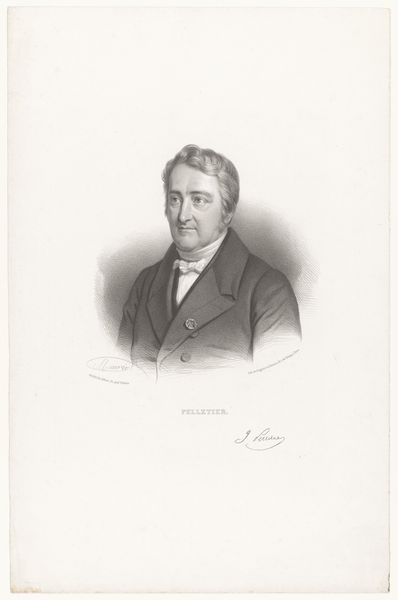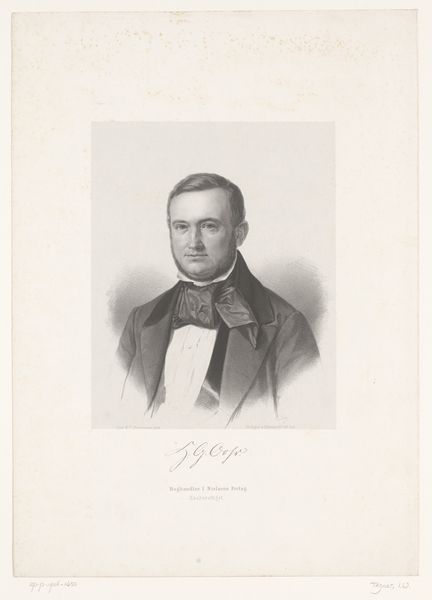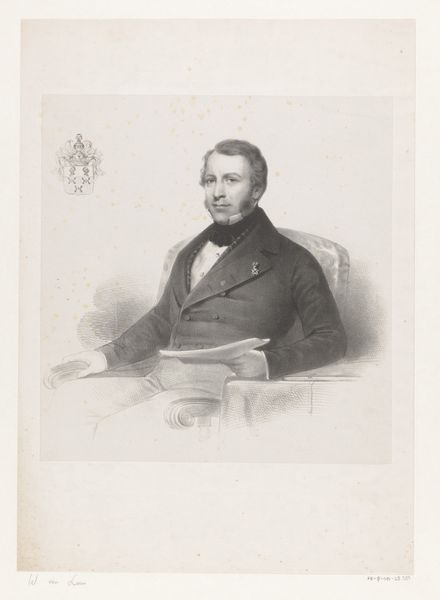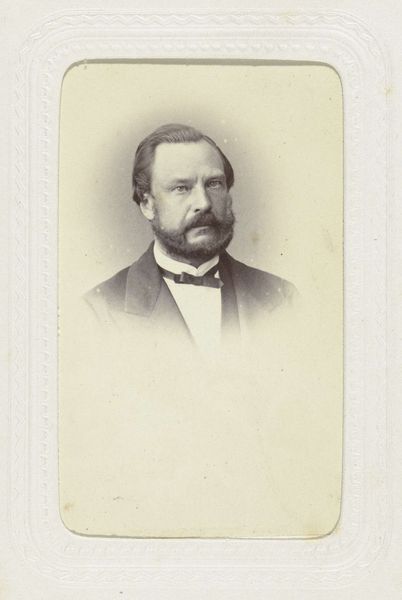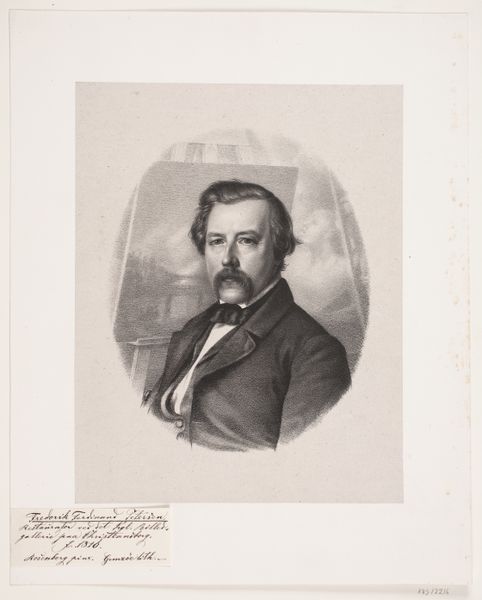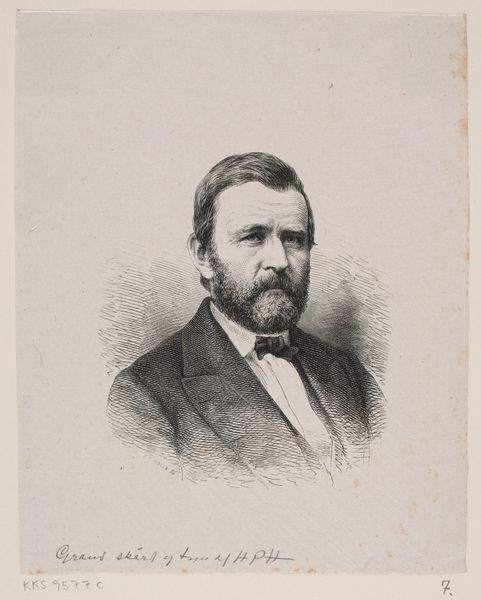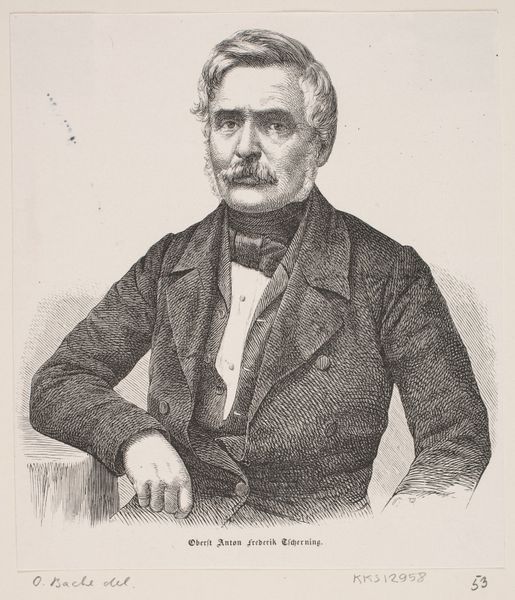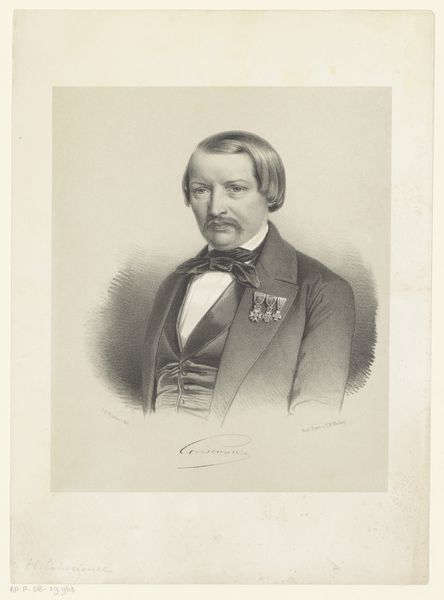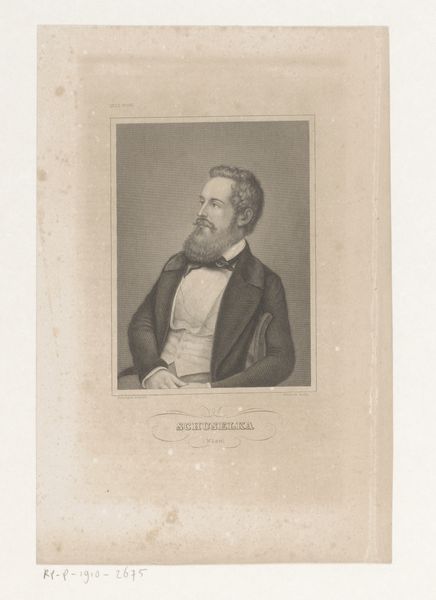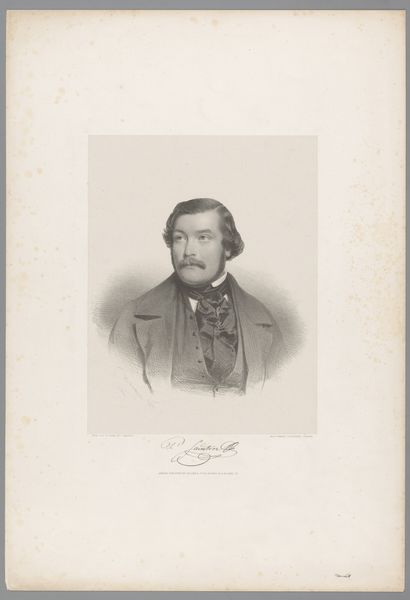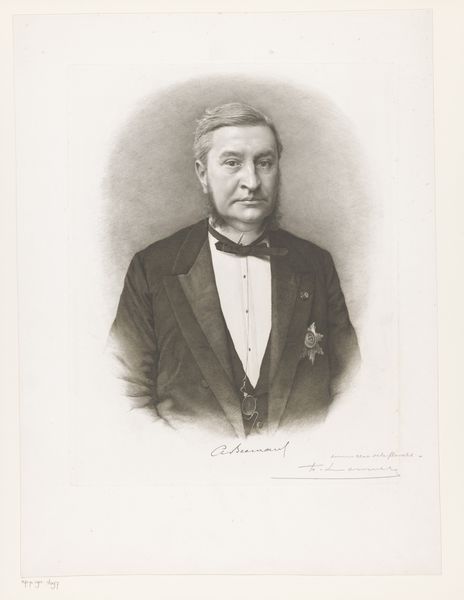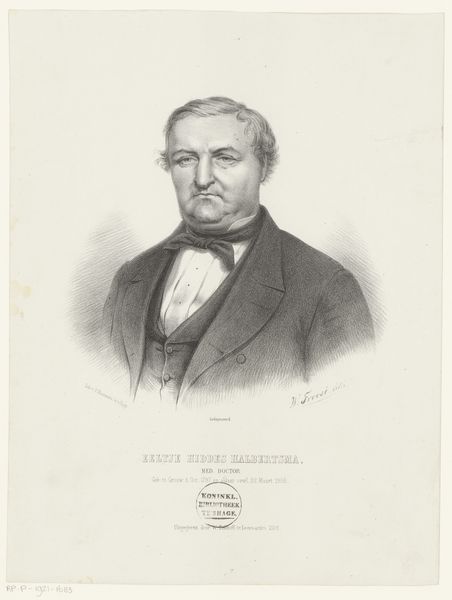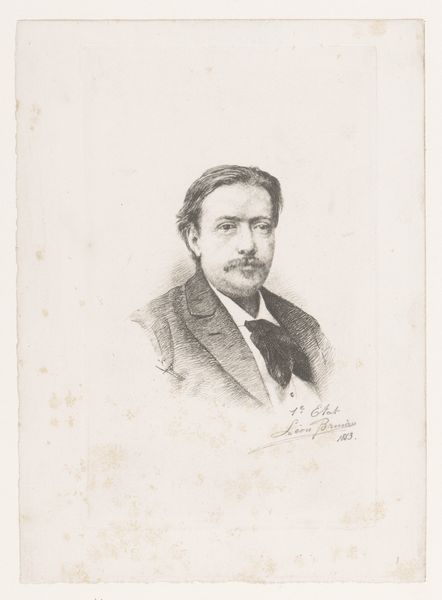
Dimensions: 372 mm (height) x 240 mm (width) (bladmaal)
Curator: Before us is a print from sometime between 1830 and 1896 entitled "Arveprins Ferdinand," now residing at the Statens Museum for Kunst. The artist is Franz Wilhelm Obermann. Editor: My immediate reaction is somber. The use of grayscale, the formal pose, it evokes a sense of dignified melancholy. And the fine engraving, quite sharp—it commands attention. Curator: Indeed. Consider the composition: the oval frame, the crest at the top, the decorative ribbon at the bottom – all act as formal devices directing our gaze towards the meticulously rendered portrait. The tonality creates distinct regions of interest, drawing us to the face. Editor: That face, though. The meticulously detailed rendering suggests the Prince’s public persona, but those subtly downturned eyes hint at vulnerability. Notice also the symbolism of the ornate frame— it's an emblem of status and hereditary power, framing him quite literally. The heavy bow could reference mourning. Curator: Yes, the artist employs stark contrasts, manipulating light and shadow to create a certain visual tension. Look closely at the sharp delineation of form in the face contrasted with the softer tonal modelling elsewhere. There’s a very calculated structuring. Editor: Precisely, and this play of light and shadow extends to cultural memory as well. This prince, positioned within this period of upheaval. The image echoes classic conventions for royalty but also carries the burden of Denmark’s turbulent 19th century, especially within the lines etched around the eyes. It seems imbued with a weighty history, perhaps some disappointment? Curator: It becomes a powerful exercise in understanding not only the prince's likeness but how Obermann employed a strict sense of structure to reinforce his status through portraiture. Editor: And, from my view, how the artwork also memorializes what that status stood for at a particular, fragile moment in history. The choice of emblems adds volumes to its meaning. Curator: Indeed. The visual choices combined with historical knowledge makes for a potent, insightful experience. Editor: Quite.
Comments
No comments
Be the first to comment and join the conversation on the ultimate creative platform.

